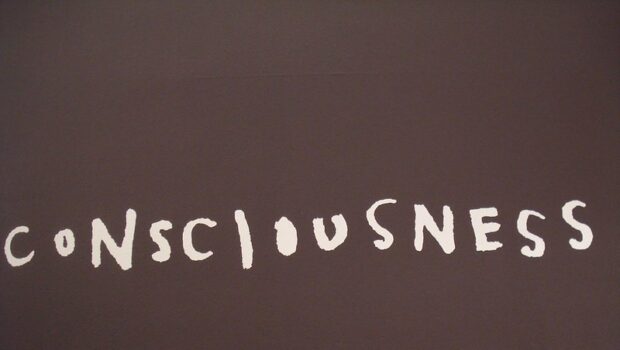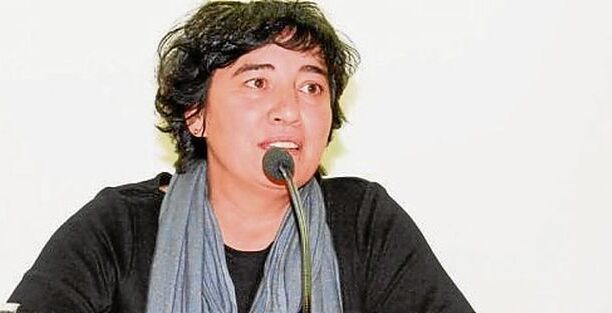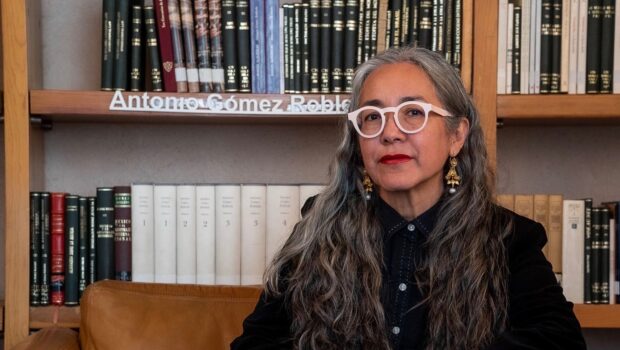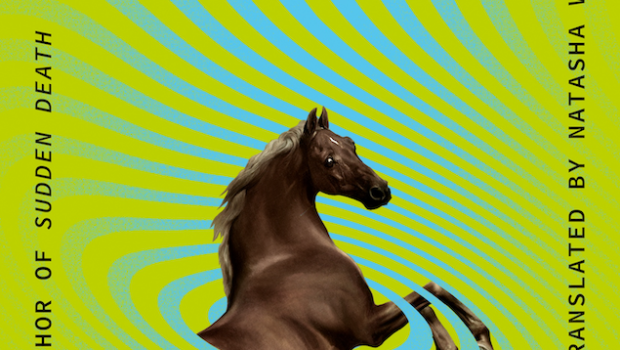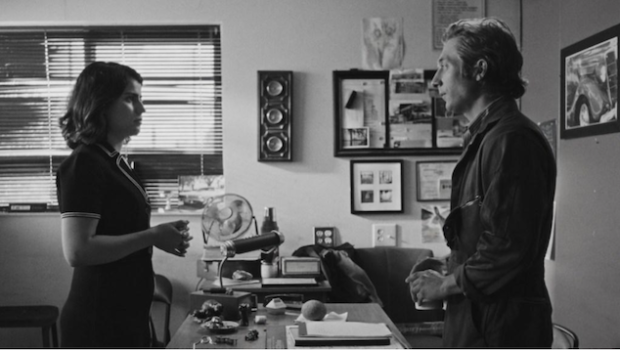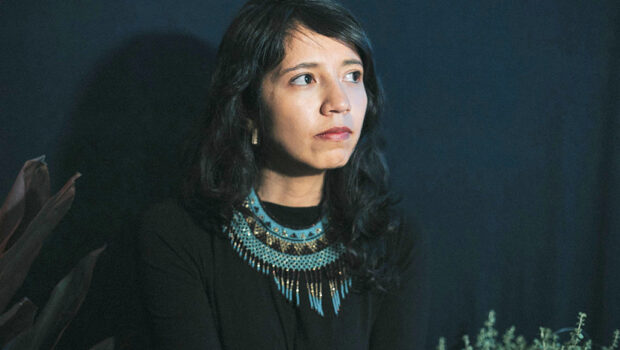On Consciousness
Sobre la conciencia
Lorís Simón Salum
Some time ago I performed a research study that focused on the concept of inner transformation. I find the subject powerful. As I witnessed each participant make sense of their profound life changes, the inequality of their emotional awareness became evident. Unequivocally, these individuals had been through life events that caused strong emotional reactions, yet their capacity to adequately verbalize it varied. In turn, their ability to integrate these experiences into their internal sense of self also varied. I am captured by the bond between emotional awareness and a higher degree of consciousness. What is consciousness? What is the thing that permeates our existence yet remains a scientific mystery?
There is the obvious difference between being awake and not awake, between having a fully functioning mind versus struggling with a brain lesion. Author and professor Antonio Damasio describes consciousness as knowledge, more specifically, wordless knowledge (2000). The use of language to define our experience is somewhat of a last step. Knowing does not begin with words or thoughts. Your body goes through life receiving information from your skin, eyes, ears, nose and tongue. This is how we receive knowledge. Think about that for a second. Moment by moment, the influx of data about the life we navigate initiates through the body. Picture those continuous instants where your body sits with wordless knowledge before it is translated onto what Damasio calls an image (which is not exclusive to the visual field): the smell of old books, the laptop’s screen, the aftertaste of hot tea. And then, something magical happens. We create a relationship to our images, a feeling. Jung (1979, p. 32-33) elucidates:
Every psychic process has a value quality attached to it, namely its feeling-tone. This indicates the degree to which the subject is affected by the process or how much it means to him (in so far as the process reaches consciousness at all). It is through ‘affect’ that the subject becomes involved and so comes to feel the whole weight of reality.
At its origin, the founding moment of an emotion is our entry to “the whole weight of reality.” An emotion: a sense of direction, a call for movement in the body, mind or yet another emotion.
And then there was the word.
To envision how we sense the world and how we relate to it at its most basic level takes me to the era of Adam and Eve. There was innocence until there was knowledge, consciousness. Maybe even before that, the story of the big bang: there was nothing and then there was something. In our own bodies, the story continues. An eternal miracle happening right at the fingertips of a merely human eye.
Consciousness as a stream of emotions that soon branches out into millions of possibilities with the potential to touch beauty and suffering. To be conscious is to feel your way through life. I do not think and therefore I am. I feel, and therefore I am. Does that change anything in the world? Does it matter?
I often wonder about the images beneath the images: the human experiences that don’t make it into the verbal realm and get pushed into a separate universe. I’m reminded of the movie Inception (2010), where worlds are captured within worlds. Anyone who’s ever been in therapy may know what it feels like to fish something from the depths of you and see it for what feels like the first time. New knowledge, new consciousness, stemming from within and not from the outside. You catch an image that wasn’t fully an image. An image beneath an image. Wordless knowledge. Perhaps Freud would disregard this as the all too well-known unconscious. Maybe Schwartz would label this as a refugee part. Jung would argue about its roots in the collective unconscious. A neuroscientist would simplify it as unprocessed memories held in the hippocampus or amygdala. It certainly feels bigger than words, larger than any one definition.
It requires a certain mental flexibility to imagine the uniqueness of one’s inner world juxtaposed with the universality of the human experience. To feel is to connect with something so real it transcends time. “Eternity is that dimension of here and now which thinking and time cuts out… The experience of eternity right here and now is the function of life” (Campbell, 1988). Two realities at the same time, one the size of a star, the other the size of a cell. Eternal. How beautiful and how terrifying it is to be conscious. A marvel and a curse. A weight to be carried without any permission ever being asked. What do I make of this? Luckily, I don’t have a choice.
Notes
Damasio. A.R. (1999). The feeling of what happens: body and emotion in the making of consciousness. Harcourt Brace.
Jung, C.G. (1979) Aion: researchers into the phenomenology of the self (2nd ed.) (R.F.C. Hull, Trans.). Princeton University Press.
Nolan, C., Nolan, C., & Thomas, E. (n.d.). Inception.
PBS. (1988). Joseph Campbell and the power of myth. United States
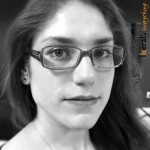 Lorís Simón Salum is a psychotherapist in private practice in Houston, TX. She is the author of Ensoulment: Exploring the Feminine Principle in Western Culture (2016), as well as the film director of the multi award-winning documentary Ensoulment: A Diverse Analysis of the Feminine in Western Culture (2013). She was the Creative Director for Literal Magazine for over 10 years. Some of her projects included Literally Short Film Festival, Literal’s short international film festival, and Literally Everything, Literal’s podcast. You can find her at www.lorissimon.com.
Lorís Simón Salum is a psychotherapist in private practice in Houston, TX. She is the author of Ensoulment: Exploring the Feminine Principle in Western Culture (2016), as well as the film director of the multi award-winning documentary Ensoulment: A Diverse Analysis of the Feminine in Western Culture (2013). She was the Creative Director for Literal Magazine for over 10 years. Some of her projects included Literally Short Film Festival, Literal’s short international film festival, and Literally Everything, Literal’s podcast. You can find her at www.lorissimon.com.
Hace algún tiempo, realicé un estudio de investigación a través de mi programa de posgrado que se centró en el concepto de transformación interna –un tema importante para mí. Mientras observaba cómo cada participante daba sentido a sus profundos cambios de vida, la desigualdad en su conciencia emocional se hizo evidente. De manera inequívoca, estas personas habían pasado por ciertas circunstancias vitales que provocaron fuertes reacciones emocionales, pero su capacidad para verbalizarlo adecuadamente variaba. A su vez, su capacidad para integrar estas experiencias en su sentido interno de sí mismos también variaba. Me cautiva la conexión entre la conciencia emocional y un grado más elevado de conciencia. ¿Qué es la conciencia? ¿Qué es eso que impregna nuestra existencia y sigue siendo un misterio científico?
Hay una diferencia obvia entre estar despierto y no estar despierto, entre tener una mente completamente funcional y luchar con una lesión cerebral. El autor y profesor Antonio Damasio describe la conciencia como conocimiento, más específicamente, conocimiento sin palabras (2000). El uso del lenguaje para definir nuestra experiencia es algo así como el último paso. El conocimiento no comienza con palabras o pensamientos. El cuerpo atraviesa la vida recibiendo información de la piel, ojos, oídos, nariz y lengua. Así es como recibimos información. Habría que eflexionar por un segundo en esta idea. De momento a momento, el flujo de datos sobre la vida que navegamos se inicia a través del cuerpo. Tendríamos que maginar esos instantes continuos donde el cuerpo experimenta conocimiento sin palabras, antes de que se traduzca en lo que Damasio llama una imagen (que no es exclusiva del campo visual): el olor de libros viejos, la pantalla de la computadora, el gusto que queda en el paladar después de un buen vino. Y luego, algo mágico sucede. Creamos una relación con nuestras imágenes, un sentimiento. Jung (1979, p. 32-33) aclara:
“Cada proceso psíquico tiene un valor en sí mismo, a saber, un tono afectivo. Esto indica el grado en que el sujeto se ve afectado por el proceso o cuánto significa para él (en la medida en que el proceso llega a la conciencia en lo absoluto). Es a través del ‘afecto’ que el sujeto se involucra y así llega a sentir todo el peso de la realidad”.
En su origen, el momento fundacional de una emoción es nuestra entrada a “todo el peso de la realidad”. Una emoción: un sentido de dirección, una llamada al movimiento en el cuerpo, la mente o incluso otra emoción. Y luego fue el verbo.
Para crear una imagen de cómo se percibe el mundo y cómo nos relacionamos con él en su nivel más básico, habría que abordar el mito de Adán y Eva. Hubo inocencia hasta que hubo conocimiento, conciencia. Tal vez incluso antes de eso, la historia del big bang: no había nada y luego hubo algo. En nuestros propios cuerpos, la historia continúa. Un milagro eterno que sucede justo al alcance del ser humano.
La conciencia como un flujo de emociones que pronto se ramifica en millones de posibilidades con el potencial de tocar la belleza y el sufrimiento. Ser consciente es intuir nuestro lugar en la vida. No pienso y, por lo tanto, existo. Siento, y por lo tanto, existo. ¿Eso cambia algo en el mundo? ¿Importa?
A menudo me pregunto acerca de las imágenes que surgen de forma anterior a las imágenes: las experiencias humanas que no llegan al ámbito verbal y se someten a un universo separado. Me acuerdo de la película Inception (2010), donde se capturan mundos dentro de mundos. Cualquiera que haya estado en terapia puede entender lo que significa descubrir algo en lo más profundo de sí mismo y verlo por primera vez. Es decir, un nuevo conocimiento, una nueva conciencia, que surge desde dentro y no llega desde el exterior. Es decir, capturasr una imagen que no era completamente una imagen. Una imagen que precede a una imagen. Esto es el conocimiento sin palabras. Quizás Freud lo descartaría como el inconsciente del que todos sabemos. Tal vez Schwartz lo etiquetaría como una parte refugiada. Jung argumentaría sobre sus raíces en el inconsciente colectivo. Un neurocientífico lo simplificaría como recuerdos no procesados retenidos en el hipocampo o la amígdala. Ciertamente se siente como si las palabras no pudieran contenerlo. Se siente más grande que una definición.
Se requiere una cierta flexibilidad mental para imaginar la unicidad del mundo interno individual que se yuxtapone con la universalidad de la experiencia humana. Sentir es conectar con algo tan real que trasciende el tiempo. “La eternidad es esa dimensión de el aquí y el ahora que el pensamiento y el tiempo dejan fuera… La experiencia de la eternidad del aquí y el ahora es la función de la vida” (Campbell, 1988). Dos realidades al mismo tiempo, una del tamaño de una estrella, la otra del tamaño de una célula. La eternidad. Qué hermoso y qué aterrador es ser consciente. Una maravilla y una maldición. Un peso que cargamos sin haberlo consentido. ¿Qué hacer con esto? Afortunadamente, no hay capacidad de elección.
 Lorís Simón Salum es sicóloga, ensayista y cineasta. Es la autora de Ensoulment: Exploring the Feminine Principle in Western Culture (2016), y la directora del multipremiado documental Ensoulment: A Diverse Analysis of the Feminine in Western Culture (2013). Fue la directora del Festival Internacional de Cortometraje Literally Short Film Festival y del podcast Literally Everything. Su página web es www.lorissimon.com.
Lorís Simón Salum es sicóloga, ensayista y cineasta. Es la autora de Ensoulment: Exploring the Feminine Principle in Western Culture (2016), y la directora del multipremiado documental Ensoulment: A Diverse Analysis of the Feminine in Western Culture (2013). Fue la directora del Festival Internacional de Cortometraje Literally Short Film Festival y del podcast Literally Everything. Su página web es www.lorissimon.com.


